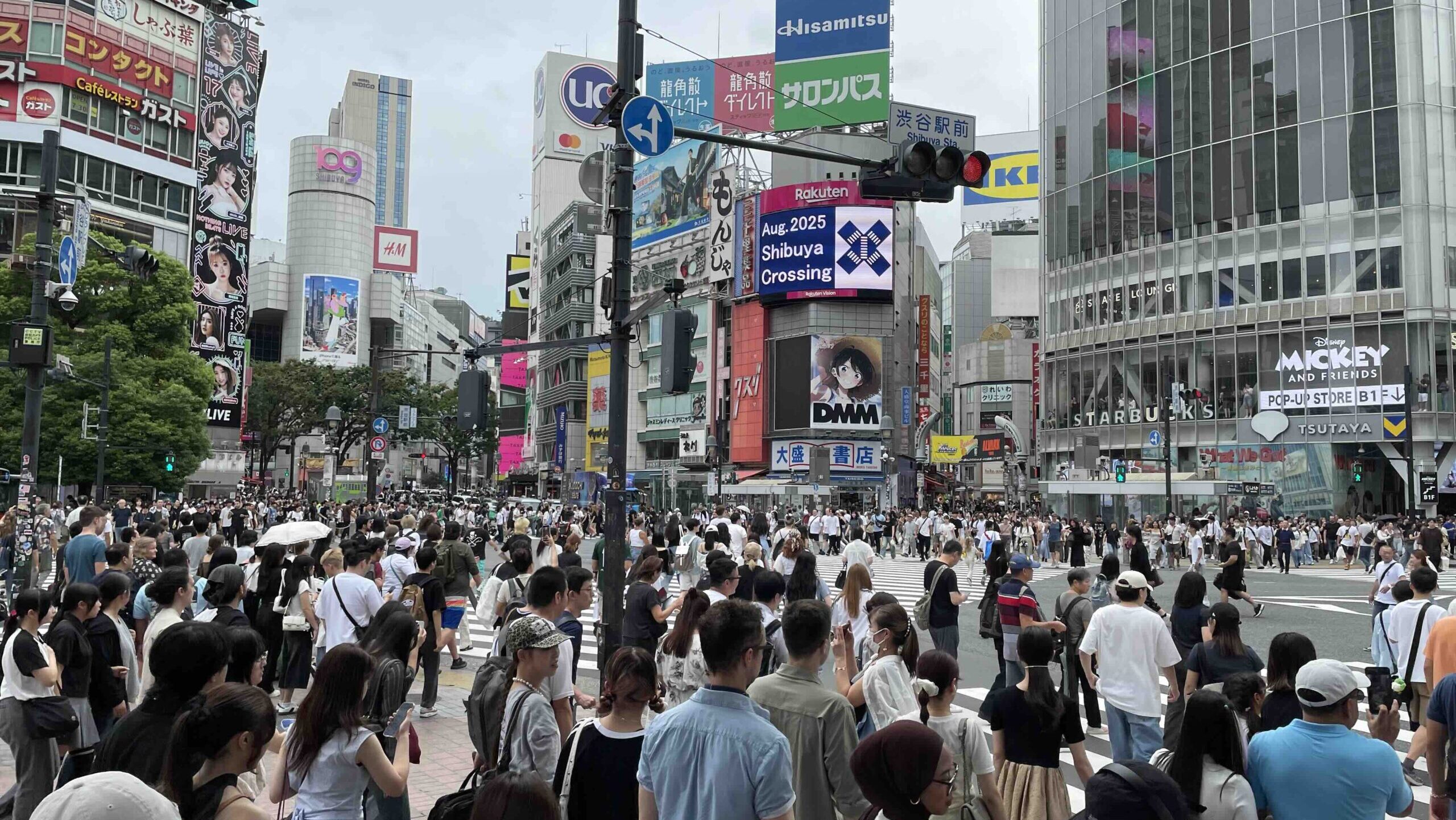Shibuya is one of Tokyo’s most dynamic districts, constantly evolving while staying true to its vibrant character. Beyond iconic spots like the world-famous Scramble Crossing and bustling Shibuya Center Street, there are hidden gems and up-and-coming attractions that only locals and true Tokyo insiders know about.
In this guide, I’ll share 13 must-visit places in Shibuya—handpicked from a local’s perspective as a former Tokyo Metropolitan Government urban planner. We’ll explore the must-see sights around Shibuya Station, charming spots in the Harajuku area, and exciting highlights from Shibuya’s latest redevelopment projects.
You’ll also find practical tips on getting around, where to stay, and answers to common traveler questions. By discovering Shibuya through a true local lens, your Tokyo trip will become deeper, richer, and far more memorable.
Contents
- 10 places to visit in shibuya| Area near Shibuya Station
- 1. Experience the Shibuya Scramble Crossing
- 2. Visit the Hachiko Statue
- 3. Reach new heights at Shibuya Sky
- 4. Wander around Miyashita Park
- 5. Nintendo TOKYO and Pokémon Center Shibuya – Limited Goods, Shopping, and Fun for All Ages
- 6. Shibuya Center Gai
- 7. Shibuya 109|An Iconic Fashion Landmark in Tokyo
- 8. Experience “Everything Shopping” at Shibuya Don Quijote
- 9. Enjoy the Shibuya Nightlife
- 10. Explore Love Hotel Hill
- 3 places to visit in shibuya| Area near Harajuku Station
- How to Get to Shibuya
- Where to Stay in Shibuya
- Frequently Asked Questions:
- Conclusion
10 places to visit in shibuya| Area near Shibuya Station
1. Experience the Shibuya Scramble Crossing
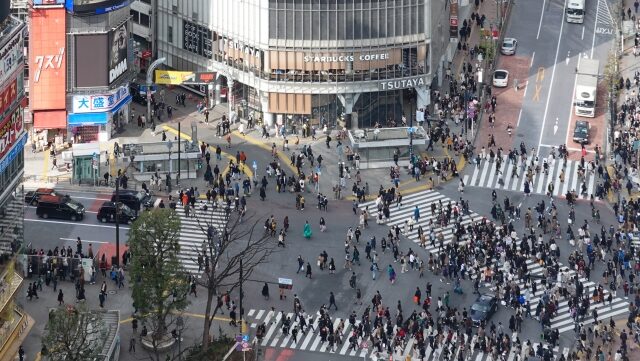
Step out of Shibuya Station’s Hachiko Exit, and you’ll immediately find yourself facing the world-famous Shibuya Scramble Crossing. When the light turns green, hundreds of people surge forward from all directions, creating a mesmerizing flow that feels like moving art. Comparable to New York’s Times Square or London’s Piccadilly Circus, this crossing is one of Tokyo’s most iconic sights.
What makes it special is that it’s more than just a traffic junction—it’s a living symbol of Tokyo’s energy and diversity. Towering digital billboards light up the surroundings, while fashion, music, cafes, and the latest trends are packed into every corner. For the best photo spots, head to the “Shibuya Sky” observation deck atop Shibuya Scramble Square or the newly reopened Starbucks inside Shibuya Tsutaya. Another spot worth checking out is the glass-walled passage inside Shibuya Mark City, which connects the JR Yamanote Line’s Tamagawa Exit to the Keio Inokashira Line gates. From here, you can look straight down onto the Scramble Crossing—and best of all, it’s completely free.From above, you’ll witness the crowd flows in a completely different and breathtaking way compared to crossing at street level.
A former Tokyo professional’s perspective
As a former Tokyo Metropolitan Government urban planner, I can’t help but notice the careful design behind this space. The all-direction “scramble crossing” system, introduced in 1973, allows pedestrians to cross safely in every direction at once—a feature that benefits both locals and visitors alike. If it’s your first time here, I highly recommend experiencing it during both the day and night. In the daytime, you’ll see a bustling mix of office workers and students; at night, the neon lights transform the scene into something almost cinematic.
2. Visit the Hachiko Statue
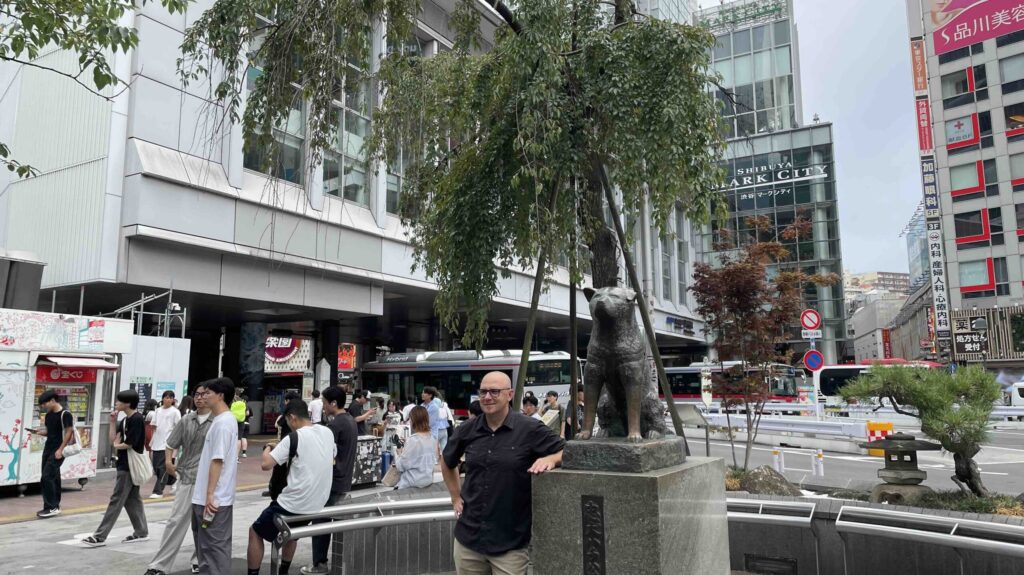
The Hachiko Statue, one of Tokyo’s most famous landmarks, stands right outside the Hachiko Exit of JR Shibuya Station. This small bronze statue in the center of a plaza honors Hachiko, a real-life Akita dog who waited for his owner at Shibuya Station every day for nine years, even after his owner had passed away. His story has been told in Japanese school textbooks, films, and international media, becoming a timeless symbol of loyalty and devotion.
If you learn about Hachiko’s history before your visit, the statue will mean much more than just a photo spot. The first statue was erected in 1934 but was melted down during World War II. The current one, rebuilt in 1948, continues to watch over the countless people who pass by every day. Since lines form easily during the day, visiting in the early morning or late afternoon on a weekday is best for a more relaxed photo experience.
Right next to the statue lies the world-famous Shibuya Scramble Crossing, where hundreds of people cross in every direction at once. After snapping your photo with Hachiko, head across the intersection to explore the surrounding cafés, shops, and streets for an authentic taste of Shibuya’s vibrant energy.
A former Tokyo professional’s perspective
I see Hachiko as more than just a meeting point—it’s a place where the story of the city and its people comes alive. Even a short stop here offers a meaningful glimpse into Tokyo’s culture and history.
3. Reach new heights at Shibuya Sky

If you want a breathtaking view of Shibuya, Shibuya Sky, located on the top floor of Shibuya Scramble Square, is an absolute must. Rising about 229 meters above the city, this observation deck offers a 360-degree panorama of Tokyo—a truly special place where you feel as if you’re reaching the sky itself.
Step out onto the rooftop, and you’ll be amazed by the sweeping views through the glass panels. During the day, you can spot Shinjuku’s skyscrapers and even Mount Fuji in the distance, while at night, the city lights sparkle like scattered jewels. No matter what time you visit, the experience will stay with you. Sunset, in particular, is magical—the sky glows orange as it blends with the city’s lights, creating the perfect photo opportunity.
On the 46th floor, the indoor area lets you enjoy the scenery regardless of the weather, complete with a stylish café and plenty of photo spots. And since it’s directly connected to Shibuya Station, it’s an easy stop to fit into your Tokyo sightseeing plans.
A former Tokyo professional’s perspective
Shibuya Sky is more than just an observation deck—it embodies Tokyo’s vision of creating a “three-dimensional, multi-layered city.”
Born from large-scale redevelopment, Shibuya Scramble Square was designed as a new urban hub, directly connected to the station and integrating offices, retail, and cultural facilities in one place. At its very top, Shibuya Sky offers a rare vantage point to grasp the city’s structure and flow. From above, you can intuitively understand the dynamic patterns formed by railways and road networks, and truly feel how Tokyo’s urban spaces sustain the lives and culture of its people.
4. Wander around Miyashita Park
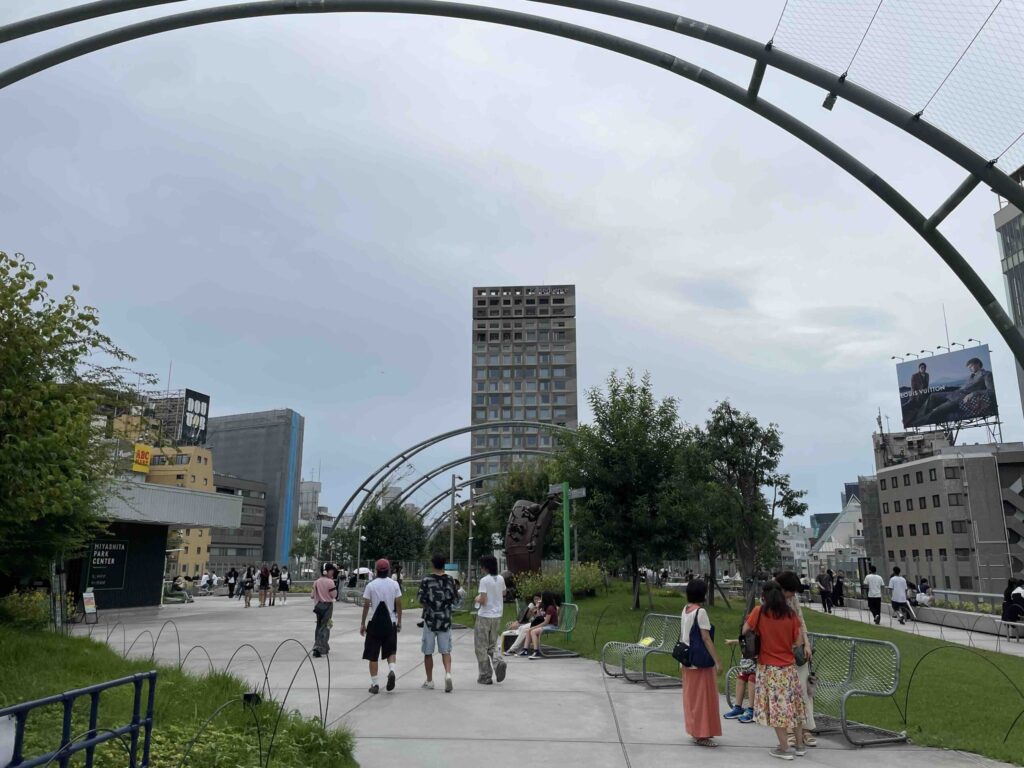
Just a few minutes’ walk from Shibuya Station, along Meiji-dori Avenue, you’ll find Miyashita Park—one of Tokyo’s newest urban landmarks. This is not just a park; it’s a multi-layered complex that combines a rooftop lawn, a skate park, a bouldering wall, shopping, cafés, restaurants, and even a hotel.
What makes Miyashita Park special for travelers is that you can enjoy both greenery and city activities right in the heart of Tokyo. On the rooftop lawn, you can relax while taking in views of the city. At night, the illuminated skyline of Shibuya creates a striking contrast with the calm of the park. On the ground floor, “Shibuya Yokocho” offers a lively dining space where you can sample dishes from across Japan—perfect for anyone looking for an authentic food experience.
A former Tokyo professional’s perspective
I can say this facility is a true symbol of Tokyo’s “vertical city design.” Limited land in the city is used to its fullest potential, integrating leisure, culture, and daily life into one dynamic space.
For first-time visitors , Miyashita Park is more than just a place to shop or eat—it’s a spot where you can experience Tokyo’s forward-thinking approach to city-making.
5. Nintendo TOKYO and Pokémon Center Shibuya – Limited Goods, Shopping, and Fun for All Ages
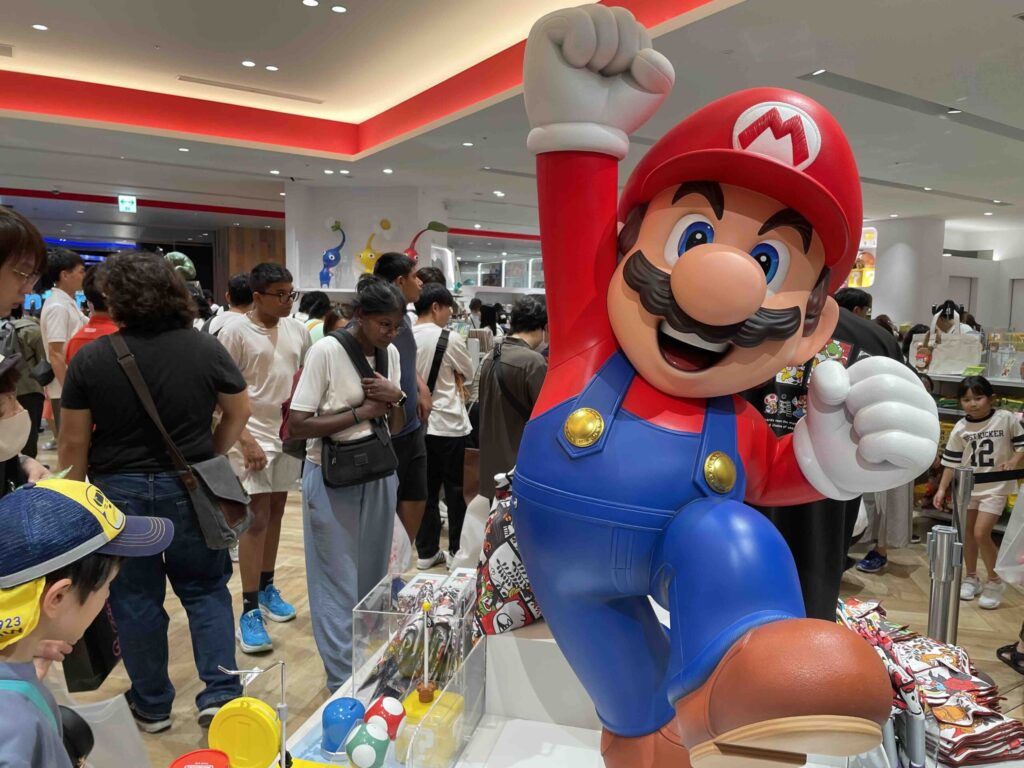
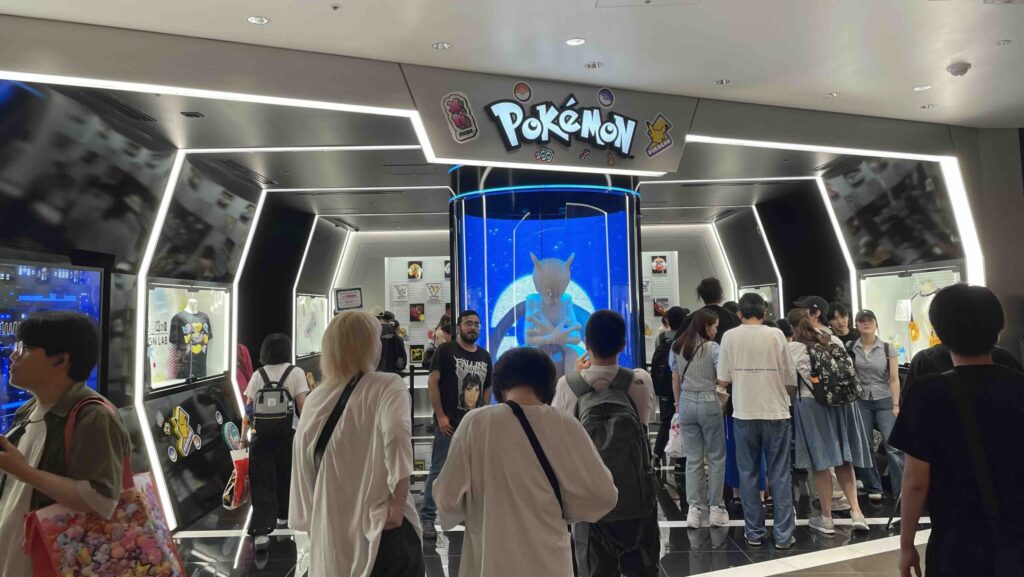
If you are planning a trip to Tokyo, one of the must-visit attractions in Shibuya is the Nintendo TOKYO and Pokémon Center Shibuya, both located on the 6th floor of Parco Mall Shibuya. These two flagship stores are not only heaven for gamers and anime fans but also a great way to experience Tokyo’s cutting-edge pop culture.
Nintendo TOKYO is the very first official Nintendo store in Japan. Here, you’ll find merchandise from iconic franchises like Super Mario, The Legend of Zelda, and Splatoon, along with exclusive Nintendo Tokyo Shibuya items you can’t buy anywhere else. Many travelers consider it the perfect spot to pick up unique souvenirs from Japan.
Right next door is the Pokémon Center Shibuya, famous for its futuristic design and the striking life-size Mewtwo statue at the entrance. Inside, you’ll discover the latest Pokémon goods, apparel, and even a special feature called the Pokémon Design Lab, where you can customize your own T-shirt. This makes Pokémon Center Shibuya stand out from other Pokémon Centers across Japan, blending Shibuya’s street culture with the world of Pokémon.
Both stores are just a 5-minute walk from Shibuya Station, making them easy to include in your sightseeing itinerary. However, keep in mind that weekends and holidays can get very crowded. Nintendo TOKYO sometimes requires a timed entry ticket, so it’s best to check the official website or social media for the latest updates before you go.
Since these shops are located inside Parco Mall Shibuya, you can also explore other attractions on the same floor, such as the Capcom Store, to complete your Tokyo gaming and shopping experience.
For families, couples, or solo travelers, visiting Nintendo TOKYO and Pokémon Center Shibuya is an unforgettable highlight of any Shibuya trip — combining fun shopping, exclusive items, and one-of-a-kind experiences in the heart of Tokyo.
6. Shibuya Center Gai
Just across the famous Shibuya Scramble Crossing from the Hachiko Exit, you’ll find Shibuya Center Gai, one of the liveliest pedestrian streets in Tokyo. Packed with restaurants, fashion boutiques, karaoke spots, and game centers, this narrow street buzzes with energy day and night. It’s a place that perfectly captures the youthful spirit of Shibuya and offers a glimpse into the city’s vibrant urban culture.
Center Gai was originally developed after World War II when the Udagawa River was covered and transformed into a pedestrian-friendly street. Over time, it naturally became a gathering place and eventually grew into one of Tokyo’s most iconic entertainment districts. In 2011, it was also nicknamed “Basketball Street”, reflecting its ties to street culture and youth trends.
During the day, the area is ideal for shopping and casual bites, while at night the neon lights turn it into a playground of entertainment. Because of the crowds, strolling slowly and taking in the atmosphere is often the best way to experience it. If you wander into the smaller side alleys, you’ll also notice the multi-layered character of Shibuya’s urban landscape.
Do keep in mind that Shibuya has introduced local rules to manage safety and cleanliness—for example, drinking alcohol on the streets is prohibited at night. Being mindful of these guidelines will help you enjoy the lively atmosphere comfortably.
A former Tokyo professional’s perspective
Shibuya Center Gai is more than just a shopping street. It’s a microcosm of the city itself—a place where diverse people gather, and culture and commerce continuously evolve. If you want to experience the real, everyday energy of modern Tokyo, this is a spot you shouldn’t miss.
7. Shibuya 109|An Iconic Fashion Landmark in Tokyo
Opened in 1979, Shibuya 109 stands right next to the famous Shibuya Scramble Crossing. Its distinctive cylindrical tower is hard to miss. The name “109” comes from a play on the Japanese pronunciation of “Tokyu,” the company behind the building.
With 8 floors above ground and 2 below, the complex houses over 100 shops featuring the latest in fashion and cosmetics, attracting mainly teenagers and women in their early 20s.
During the 1990s and 2000s, Shibuya 109 gained international fame as the epicenter of “gyaru” culture—a bold and trendsetting fashion style. Many of Japan’s street trends started here and eventually spread nationwide, even reaching overseas. Today, the building continues to be a trend hub for Gen Z, showcasing the freshest styles in Tokyo.
How Travelers Can Enjoy Shibuya 109
For first-time visitors, Shibuya 109 offers much more than shopping—it’s a cultural experience.
- Check out the latest Japanese fashion: See what styles young Tokyoites are embracing right now.
- Find cosmetics and gifts: Many stores are duty-free, making them perfect for souvenirs.
- Experience pop-up events: Seasonal collaborations and pop-up shops mean every visit feels new and exciting.
8. Experience “Everything Shopping” at Shibuya Don Quijote
If you stroll through Shibuya, one building will immediately catch your eye: MEGA Don Quijote Shibuya Main Store, open 24 hours a day. Known affectionately as “Donki” by locals, it’s a massive discount store where you can find almost anything—snacks, cosmetics, electronics, fashion items, and even quirky character goods. One of the biggest draws for international visitors is the tax-free counter, where you can buy souvenirs and Japanese treats in bulk at lower prices. Perfect for saving time and money during your trip.
How Travelers Can Enjoy Don Quijote
Each floor has its own category—from food and drinks in the basement to cosmetics, electronics, and toys on the upper floors. For American visitors, the most popular finds are Japan-exclusive snacks, unique beauty gadgets, and compact high-tech appliances. With reasonable prices and a wide selection, Donki is the go-to spot for discovering things you won’t find back home.
9. Enjoy the Shibuya Nightlife
Shibuya after dark reveals a completely different side from its daytime bustle. Under the glow of neon lights, people gather to eat, drink, listen to music, and connect with one another. Just a few minutes’ walk from the famous Shibuya Scramble Crossing, you’ll find an impressive concentration of unique nightlife spots packed into a compact area.
One place not to miss is Nonbei Yokocho, an alleyway lined with tiny izakayas and bars that preserve the atmosphere of postwar Japan. With only a handful of seats in each establishment, the close quarters make it easy to strike up conversations with the owner or fellow guests. For a livelier and more modern setting, head to Shibuya Yokocho beneath Miyashita Park. This food hall offers a wide variety of dishes and a lively atmosphere, making it a great stop for groups or anyone who wants to sample different flavors in one place.
Music lovers will find plenty to explore as well. Shibuya is home to iconic clubs like HARLEM, a landmark for hip-hop culture, and WOMB, internationally known for its electronic music scene. Each venue specializes in its own genre and stays active until the early hours of the morning. If you prefer a quieter night, you can slip into cocktail bars such as The SG Club or enjoy vinyl jazz records at JBS, both offering a more relaxed and sophisticated experience.
For those who want to take in the city lights, Shibuya Sky is the perfect spot. Located 229 meters above ground atop Shibuya Scramble Square, its open-air deck offers breathtaking panoramic views of Tokyo’s glittering skyline—a completely different experience from the daytime cityscape.
10. Explore Love Hotel Hill
Just a few minutes’ walk from Shibuya Station, up the slope of Dogenzaka, lies the area known as Love Hotel Hill. As night falls, neon signs light up the streets, creating a unique and slightly mysterious atmosphere that represents Shibuya’s nightlife.
This district has a long history. Originally a geisha quarter in the postwar years, it gradually transformed into an area filled with love hotels. Today, it has also become a spot many visitors are curious to see. The buildings themselves are part of the appeal—ranging from simple, modern facades to playful, theme-park-style designs that make a stroll through the neighborhood fascinating in itself.
A former Tokyo professional’s perspective
In recent years, redevelopment has brought new cafés and mixed-use complexes to the area, making it easier to explore even during the day. At night, however, you may encounter street solicitation, so it’s wise to stay aware of your surroundings.
Love Hotel Hill captures a very different side of Shibuya—one that contrasts with the bustling shopping streets and tourist landmarks nearby. Walking through this district reveals a layered, more authentic dimension of Tokyo’s urban life.
3 places to visit in shibuya| Area near Harajuku Station
11.Visit Meiji Jingu Shrine & 12. Yoyogi Park
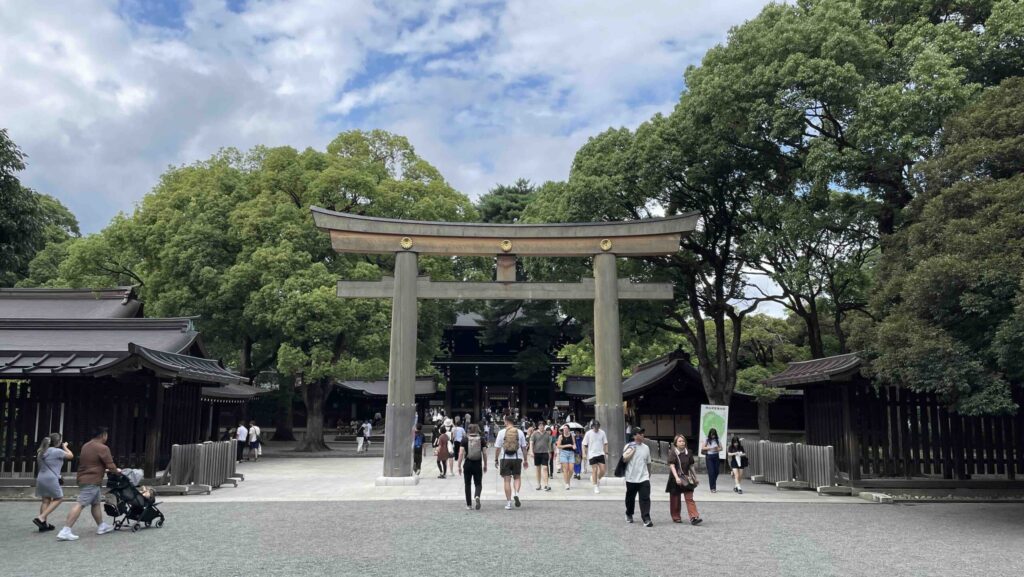
If you’re looking to step away from the hustle and bustle of the city and immerse yourself in tranquility and nature, Meiji Jingu Shrine and Yoyogi Park—just steps from Harajuku Station—are the perfect places to explore. Passing through the massive torii gate feels like entering another world. The tree-lined path, made up of over 120,000 trees, creates a serene forest atmosphere that makes you forget you’re still in the heart of Tokyo. At the main shrine, you can admire traditional Shinto architecture, and if you’re lucky, you may even witness a wedding procession. In the inner garden, seasonal flowers and the clear waters of the Kiyomasa Well offer a peaceful retreat.
Right next door, Yoyogi Park spreads out with wide lawns, a fountain plaza, and a lively, open atmosphere. On weekends, you’ll find flea markets, cultural festivals, and people enjoying picnics or leisurely walks. The contrast between the sacred calm of Meiji Jingu and the vibrant energy of Yoyogi Park makes this area uniquely captivating.
A former Tokyo professional’s perspective
This neighborhood beautifully blends “history and nature” with “community and international culture.” Even in a short visit, you can experience Tokyo’s many layers, making it an ideal destination for anyone exploring the city for the first time.
13. Takeshita Street
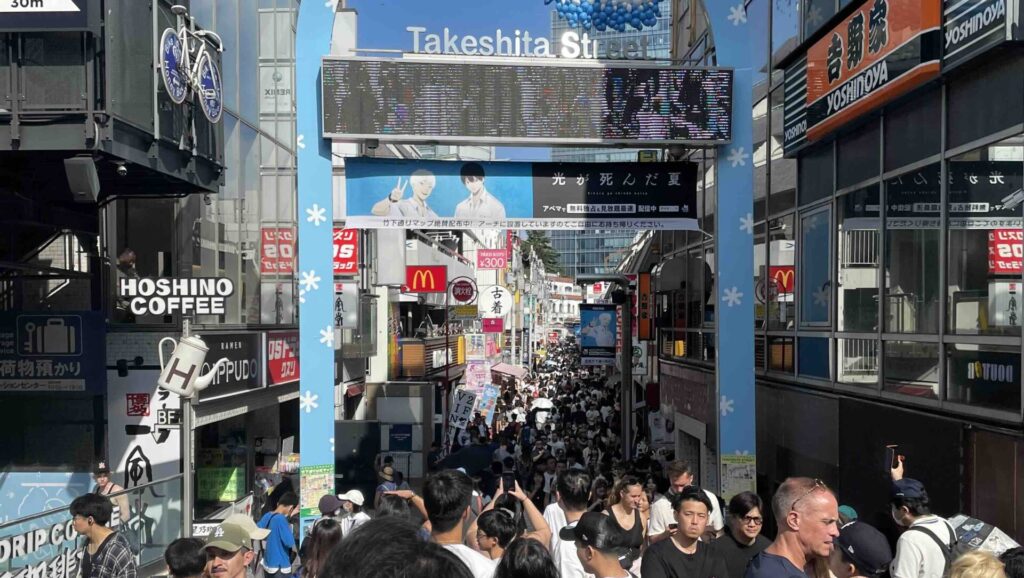
Just outside Harajuku Station lies Takeshita Street, a pedestrian-only avenue stretching about 350 meters. Lined with colorful fashion boutiques, quirky accessory shops, and Instagram-worthy sweet stands, this narrow street has become one of Tokyo’s most iconic symbols of pop culture.
Among the highlights are long-standing crepe shops that first appeared in the 1970s, as well as vendors selling giant rainbow-colored cotton candy. Enjoying these treats while strolling down the street is part of the unique experience. You’ll also find photo booths and character goods stores that spark excitement for visitors of all ages.
On weekends, the street becomes packed with young people and tourists, but the lively energy is part of its charm. For a more relaxed walk, visiting on a weekday morning is highly recommended.
A former Tokyo professional’s perspective
Takeshita Street is a fascinating example of how culture and commerce can be condensed into a small, vibrant space. Its location, just steps away from the calm of Meiji Shrine and the sophistication of Omotesando, highlights Tokyo’s unique contrasts. Even a short visit leaves a lasting impression, making it a must-see highlight of any Tokyo trip.
What’s New in Shibuya
Shibuya is a neighborhood that never stops evolving. Major redevelopment projects are bringing new buildings and attractions one after another, transforming the area into an even more dynamic urban hub. Around Shibuya Station, new pedestrian decks and concourse upgrades are making it much easier to get around.
The New Complex “SHIBUYA AXSH”
Opened in 2024, SHIBUYA AXSH features a light-filled, glass-walled space with shops, cafés, and an outdoor plaza designed for events and art exhibitions. It’s directly connected to Shibuya Hikarie and Shibuya Cross Tower via pedestrian decks, creating a seamless experience for exploring the area.
A Renewed SHIBUYA TSUTAYA
The iconic SHIBUYA TSUTAYA has reopened after a complete renovation, bringing back its legendary Starbucks overlooking the scramble crossing. It’s once again the perfect spot to sip coffee or browse books while taking in one of Tokyo’s most famous views.
A New Hub for Games and Pop Culture
At Shibuya PARCO, the brand-new SEGA STORE TOKYO has joined Nintendo, Pokémon, and Capcom shops, making the mall a must-visit destination for fans of gaming and Japanese pop culture.
Fresh Hotel Options
The long-stay Hyatt House Tokyo Shibuya recently opened, offering a “live like a local” style that’s ideal for both leisure and business travelers. Around Dogenzaka, more lifestyle hotels are also popping up, expanding the range of choices for visitors.
New Rules for a Safer Shibuya
To keep the streets safe and enjoyable, Shibuya has introduced stricter rules, including a ban on public drinking around Halloween and tighter regulations for go-karts on public roads. These efforts ensure that everyone can enjoy the city with peace of mind.
How to Get to Shibuya
From the Airports
- From Narita Airport
The Narita Express (N’EX) runs directly to Shibuya Station with no transfers. Another option is taking the Keisei Skyliner to Nippori or Ueno and then transferring to the JR Yamanote Line. If you’re carrying heavy luggage, the airport limousine bus to Shibuya Station or Shibuya Mark City is a convenient choice. - From Haneda Airport
Take the Keikyu Line to Shinagawa and transfer to the JR Yamanote Line—about 30 minutes in total. You can also ride the Tokyo Monorail to Hamamatsucho and transfer to the Yamanote Line. Limousine buses are also available from Haneda, offering direct service to Shibuya Station, Shibuya Mark City, and nearby hotels.
From Major Stations in Tokyo
- From Shinjuku: About 7 minutes on the JR Yamanote Line or Shonan-Shinjuku Line.
- From Asakusa: About 35 minutes on the Tokyo Metro Ginza Line, direct to Shibuya.
- From Yokohama: Around 25 minutes on the Tokyu Toyoko Line (express service).
If You’re Arriving by Shinkansen
- From Tokyo Station or Shinagawa Station, simply take the JR Yamanote Line directly to Shibuya.
- From Shin-Yokohama Station, the new Sotetsu–Tokyu Link provides a direct connection to Shibuya.
Tickets and IC Cards
Most train and subway lines in Tokyo accept IC cards like Suica and PASMO. For short stays, the “Welcome Suica,” available at airports, is a convenient option.
Once You Arrive at Shibuya
Shibuya Station is multi-layered with many exits. For sightseeing, follow signs to the Hachiko Exit or Scramble Crossing area to easily find your way.
Where to Stay in Shibuya
Shibuya is one of the best areas to stay in Tokyo, offering easy access to sightseeing, shopping, and dining. With a wide range of hotels, you can choose the perfect place depending on your style, budget, and travel plans. Here are some top recommendations:
Luxury Hotels with Stunning Views
For those who want to enjoy Tokyo’s skyline in comfort, Cerulean Tower Tokyu Hotel is an excellent choice. All guest rooms are located on the upper floors, providing panoramic views of the city. With lounges, fine dining, and a calm atmosphere, it’s ideal for a relaxing stay.
Direct Access to the Station
If convenience is your priority, Shibuya Excel Hotel Tokyu is hard to beat. Located inside Shibuya Mark City, it offers direct access to the station. Some rooms even overlook the famous Shibuya Scramble Crossing, letting you experience the city’s unique energy from above.
Stylish Boutique Stays
For travelers looking for a trendy and design-focused experience, TRUNK(HOTEL) and all day place shibuya are popular picks. With on-site cafés, bars, and stylish interiors, they offer a chance to connect with Shibuya’s creative local culture.
Family-Friendly and Long-Term Options
If you’re traveling with family or planning a longer stay, Tokyu Stay Shibuya is a great option. Guest rooms come with convenient amenities such as washing machines and microwaves, making it easy to feel at home even during an extended trip.
Budget-Friendly and Unique Experiences
For solo travelers or those seeking a more affordable stay, The Millennials Shibuya offers innovative “smart pod” accommodations. Located in the heart of Shibuya, it combines futuristic design with excellent value.
Frequently Asked Questions:
Q1. What are the must-see spots in Shibuya?
The Shibuya Scramble Crossing is the top highlight, known worldwide for the thousands of people who cross from every direction at once. Just nearby is the Hachiko Statue, a famous meeting spot and symbol of loyalty. For breathtaking views, head to SHIBUYA SKY, a rooftop observation deck 229 meters above the city. And don’t miss Center Gai, the lively pedestrian street lined with shops, cafés, and entertainment.
Q2. Where can I get the best views of Shibuya?
The rooftop deck at SHIBUYA SKY offers a 360° panorama of Tokyo, with strikingly different atmospheres in the daytime and at night. You can also enjoy views of the crossing from the rooftop of MAGNET by SHIBUYA109, or from the upper floors of Shibuya Hikarie.
Q3. Are there family-friendly spots in Shibuya?
Yes. MIYASHITA PARK features a rooftop lawn, playgrounds, and a relaxing atmosphere in the middle of the city. At Shibuya PARCO, kids and adults alike will love the official Nintendo TOKYO store and the Pokémon Center Shibuya.
Q4. How can I avoid the crowds?
Shibuya is busy throughout the day, but mornings are generally quieter. If you want to walk through the Scramble Crossing or Center Gai without heavy crowds, visiting before noon is ideal. Evening hours tend to be the busiest.
Q5. What can I do in Shibuya on a rainy day?
Shibuya is filled with large shopping complexes, making it easy to enjoy even in bad weather. SHIBUYA109, Shibuya Hikarie, and Shibuya Stream are excellent choices for shopping, dining, or just exploring indoors. Exhibitions and pop-up events are also frequently held.
Q6. Is Shibuya safe at night?
Yes, Shibuya is generally safe and bustling well into the night. However, during special events like Halloween, it becomes extremely crowded and traffic restrictions are often in place. It’s best to check local announcements for up-to-date guidance.
Q7. Where should I go shopping in Shibuya?
For youth fashion, SHIBUYA109 is the landmark destination. Center Gai offers street fashion, quirky shops, and casual dining. If you’re looking for stylish restaurants and boutiques, Shibuya Stream and MIYASHITA PARK are also excellent options.
Conclusion
Shibuya is home to iconic landmarks like the Scramble Crossing and Hachiko Statue, as well as modern highlights such as Shibuya Sky, MIYASHITA PARK, Nintendo TOKYO, and the Pokémon Center. From shopping at Shibuya 109 and exploring Center Gai to experiencing the nightlife around Dogenzaka, there’s something for every traveler.
When planning your Shibuya itinerary, consider extending your route to nearby attractions like Meiji Jingu Shrine, Yoyogi Park, and Harajuku’s Takeshita Street. With its convenient access and wide range of hotels, Shibuya is also one of the best bases for exploring Tokyo.
Whether it’s your first visit or a return trip, Shibuya’s sightseeing spots are constantly evolving. Use this guide to craft your own Shibuya travel plan and make your Tokyo trip truly unforgettable.
